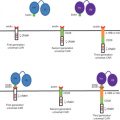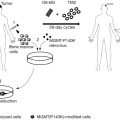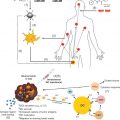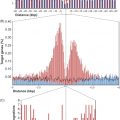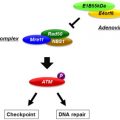Keywords
Ethics, translational research, preclinical studies, trial design, subject enrollment
Ethics Beyond Research Regulation
In this chapter, we address key ethical issues concerning the conduct of translational anticancer gene transfer research. Our focus is on ethics and not on rehearsing a litany of current research regulatory requirements per se. Although the two share historical origins and overlap in content, attending solely to the latter provides no guarantee that ethical concerns will have been adequately addressed.
Current research regulations developed out of a set of ethical values underscored in seminal documents that together comprise our international heritage of research ethics. Although they vary in content, form, and intended audiences, various ethical consensus statements (most notably the Nuremberg Code , the Declaration of Helsinki , and the Belmont Report ) implicitly or explicitly posit four important values underlying the ethical conduct of research: scientific integrity, beneficence, respect for persons, and justice.
Without scientific integrity (understood here in the classical sense as “completeness” or “wholeness” derived from the term’s Latin root integritas ), there would be no ethical justification for proceeding with research—particularly research that would waste resources and impose needless risks due to its lack of scientific rigor. Furthermore, scientific integrity is an important ethical value because it relates to a scientist’s duty to be a spokesperson for truth. That is, a scientist must not only seek the truth using sound, reproducible methods but also communicate her results truthfully to the public, to funders, to publishers, and to the greater scientific community. In this sense, scientific integrity is an ideal, not just for conducting research but also for the character of the scientist herself—a type of personal wholeness between her scientific commitments and her actions.
Beneficence is the moral obligation to contribute to the welfare of others. Beneficence on the part of researchers can be directed toward society at large or to the individuals participating in research. When beneficence is aimed at individual human research subjects, it obligates researchers and science regulators to try to minimize potential harms and maximize potential benefits for study volunteers. As the Belmont Report states, “In the case of particular projects, investigators and members of their institutions are obliged to give forethought to the maximization of benefits and the reduction of risk that might occur from the research investigation” .
“Respect for persons” is perhaps the most well-known of all the research-related moral values. Typically, this requirement is understood to entail, on the one hand, a requirement for informed consent before undertaking research in human subjects who have decisional capacity and, on the other hand, a limitation on allowable nontherapeutic risk for human subjects lacking decisional capacity. The Nuremberg Code begins with the statement that “the voluntary consent of the human subject is absolutely essential.” The Declaration of Helsinki states that “subjects must be volunteers and informed participants in the research project.” To respect persons in this manner is to honor their right to make decisions regarding their own lives and bodies. This right is normally referred to as the right to personal autonomy or the right to self-determination.
Justice is another ethical value that bears on the conduct of science. In its most generic sense, the concept of justice requires impartially that persons receive what is owed to them. The conception of justice that preoccupies contemporary research ethics is distributive justice , which involves the impartial distribution of burdens and benefits among individuals or groups. Distributive justice in research requires that burdens and benefits be fairly distributed, both during the course of research among human subjects and later when research results become available to broader segments of society. For example, the Belmont Report states that human subjects must be fairly selected to volunteer for research, not systematically chosen from targeted populations because they are easy to manipulate. Nor should subjects be selected from groups unlikely to benefit from later applications of the research. Likewise, the Declaration of Helsinki states that “medical research is only justified if there is a reasonable likelihood that the populations in which the research is carried out stand to benefit from the results of the research” .
Historically, the broad ethical values described previously provided the basis for institutional ethical research standards in the United States—both the U.S. federal Policy for the Protection of Human Subjects (45 CFR 46), issued by the Department of Health and Human Services (DHHS) and overseen by the Office of Human Research Protections, and the U.S. Food and Drug Administration’s (FDA) equivalent policy on informed consent (21 CFR 50). These federal regulations constitute the American national standard for human subjects research. Both DHHS and FDA policies require human subjects research to be reviewed by an institutional review board (IRB). IRBs are charged with upholding the Belmont Report principles of respect for persons, beneficence, and justice, each by reviewing aspects of a proposed study relating to informed consent, risk/benefit ratio assessment, and fair subject selection.
As these two brief examples suggest, abstract ethical values provide the reference points necessary to legitimize research regulatory requirements at the ground level. Without the navigational star of first having a set of general ethical values, there is no way for us to answer the question, “Why use this practical standard for research regulation and not some another?” The only way to justifiably choose one regulatory requirement over another is by appealing to each one’s capacity to realize a presupposed set of philosophical moral values. This is far easier said than done, however, because there are no preset ways to determine how best to realize any one of these abstract ethical values within a set of regulatory requirements, nor how best to balance these values against one another when they come into conflict. The ethical values of scientific integrity, beneficence, respect for persons, and justice are open to a fairly wide range of interpretation at the regulatory level, and reasonable people can disagree about what each of these values requires in concrete situations. These latter points may perhaps be best illustrated if we turn our attention to ethical issues arising within each broad stage of the clinical translation process: (1) when to initiate clinical trials, (2) clinical trial design, and (3) enrolling human research subjects.
When to Initiate Clinical Trials
Preclinical Studies Underwrite the Ethical Justification for Clinical Development
Trials of new interventions should always be preceded by preclinical investigations. This requirement, which is articulated in the Nuremberg Code and indirectly glossed in the Declaration of Helsinki , is rooted in the principle of beneficence that human investigations must have a favorable risk/benefit balance. Preclinical studies advance this principle in several ways. First, toxicology studies allow clinical investigators to anticipate and manage safety issues in trials. Second, preclinical studies help establish the rationale for proceeding into trials. Trials are expensive, risky, and burdensome for human subjects. These expenses and burdens often escalate as interventions advance to later stages of development. Preclinical studies demonstrating disease response (“efficacy studies”) provide evidentiary grounds for expending resources and exposing patients to risk—not merely in first-in-human trials but also in subsequent phases of clinical development. A third way preclinical studies advance risk/benefit is that they enable meaningful interpretation of trial results. In cancer, the a priori odds of successful translation of a given intervention are very long. A key factor in evaluating risk/benefit is whether negative trials (i.e., failure to produce signal that would justify further development) are informative. If preclinical efficacy studies are performed well, discordance between preclinical and clinical results can prompt new discoveries about pathophysiology, disease models, or drug behavior. If preclinical efficacy studies are done poorly, discordance carries little probative value. Thus, in addition to promoting individual beneficence for future research subjects and the social value of increased scientific knowledge, rigorous preclinical studies also promote the ethical value of scientific integrity as investigators aim to extend their research to human applications.
Unfortunately, we cannot rely at this time wholly on research regulatory processes to uphold the ethical values of beneficence and scientific integrity just noted. Drug regulators, such as the FDA, offer specific guidance for toxicology testing . However, regulators do not generally seek or evaluate preclinical evidence of efficacy . There is little reason to believe IRBs, which are charged with prospective ethical review of trials, review the content and quality of preclinical efficacy studies. As such, responsibilities for evaluating efficacy in animal models fall squarely on the shoulders of sponsors and clinical investigators. Some areas of drug development, such as stroke and Alzheimer’s disease , have relatively mature guidelines for designing and evaluating preclinical efficacy studies. Unfortunately, there are few, if any, well-developed counterparts for cancer drug development , much less gene transfer. Nevertheless, four general statements can be extended from stroke and other preclinical guidelines.
First, preclinical studies should address (and clinical investigators should evaluate) threats to internal validity. Many factors in preclinical studies can confound measures of drug activity in animals. For example, if animals in the control group have more advanced disease than animals in the treatment group, and a gene transfer strategy targets processes that drive early progression of disease, then researchers will observe exaggerated treatment effects in preclinical studies. If investigators are emotionally invested in demonstrating large treatment effects in preclinical studies, they can subconsciously score responses differently in treatment and control animals. Such issues are not easily dismissed in cancer research. Balanced allocation matters in a realm where disease phenotypes vary from one animal to another due to variation in the induction of disease state. Objective outcome assessment matters in realms where endpoints are potentially subjective. Many cancer studies use an ostensibly objective endpoint, “survival.” However, animal care committees generally require researchers to score moribundity and euthanize animals. Moribundity scoring is potentially subjective. Five common tools for addressing internal validity threats are randomized allocation of animals, masked outcome assessment, masked treatment allocation, a priori power calculations, and accounting for the flow (and loss) of animals in experiments. Unfortunately, such obvious checks on threats to internal validity are rarely reported as having been implemented in preclinical studies .
Second, preclinical studies should address threats to external validity—that is, they should provide grounds for believing treatment effects seen in one experimental system will generalize to another. Experimental models often have idiosyncrasies that limit the reliability of clinical generalization. For instance, many animals used in cancer studies lack functional immune systems. This may limit clinical generalization, especially in settings such as gene transfer, where immune reactions to vectors can dampen response. To address external validity, researchers should replicate disease response using varied animal models, outcome measures, or versions of the intervention. Scientists involved in translating anticancer gene transfer strategies have made similar arguments .
Third, preclinical studies should address threats to the theories underlying clinical translation—what is often called construct validity . Construct validity threats occur in two forms. In one form, preclinical studies are sometimes performed in ways that diverge from those used in trials. This can occur when drugs intended to treat metastasized tumors are tested in nonmetastatic preclinical models or when preclinical studies test monotherapy but trials test combination therapies. The other way construct validity can be threatened is if theories underlying vector action are wrong. Researchers often address such construct validity threats by performing studies designed to demonstrate response at key steps in a causal pathway. For instance, if a vector is aimed at stimulating apoptosis, researchers might report molecular and histological analyses consistent with vectors causing tumor shrinkage by that mechanism.
Fourth, researchers should synthesize results of all preclinical evidence prior to trial initiation using systematic review methods. In clinical research, knowledge synthesis begins with systematic review. Although less common in preclinical research, systematic review is increasingly used to describe evidence gaps and to measure treatment effects. Systematic review in preclinical research is stymied by publication biases. In one estimate, effect sizes in stroke preclinical studies declined by almost one-third when researchers used statistical technique to “correct” for unpublished findings . Planning and review of early phase clinical studies should include an assessment of risk of bias due to nonpublication.
Gene Transfer Strategies Present Distinctive Challenges for Risk/Benefit
Much of our analysis thus far applies generically for all cancer drug development. However, gene transfer strategies present distinctive ethical challenges. First is the level of uncertainty. Vectors sometimes have properties that are very difficult to anticipate prior to human trials. Some vectors, such as those that are replication competent, propagate themselves; others, such as retroviral vectors, involve irreversible modification. As such, vectors often have very different pharmacokinetic properties. Another issue is their immunogenicity, which is very difficult to model, especially given that many preclinical models used in cancer research involve immunodeficient mouse strains. Another challenge in designing gene transfer trials is the nonlinearity of toxicity dose–response curves. In one infamous case involving adenoviral vectors, a threshold toxicity response led to the death of a relatively healthy trial subject. Approaches using chimeric antigen receptor-based strategies have also been associated with unpredictable toxicity .
Uncertainties surrounding novel vectors place several ethical demands on clinical investigators. First, investigators should build substantial margins of safety into their trials. For instance, they should start dose-escalation trials at doses that are well below those expected to show activity, and they should escalate dose in modest increments—and only after observing outcomes in the previous dose cohorts. Second, the uncertainties confronted in gene transfer trials create opportunities for learning. Investigators should undertake studies in ways that enable them to be absorbed into a larger body of knowledge—for example, by using common reference standards for measuring vector dose—and they should provide complete reporting of findings, including those that are negative or inconclusive.
Some Viral Vectors Present Risks to Third Parties
Another distinctive set of issues encountered in gene transfer studies is bystander risk. This is a matter of justice regarding the social distribution of risks. Subjects in trials often shed vector through urine or semen, and such viral shedding can expose third parties such as sexual partners, family members, or health care staff. Although most vectors used in gene transfer studies are replication incompetent, an important theoretical concern is the possibility that gene transfer vectors might recombine with naturally occurring viruses. To our knowledge, this has never occurred in gene transfer trials. Nevertheless, investigators should take basic measures to manage risks to bystanders, including isolating subjects (if necessary), encouraging them to use barrier contraception, and monitoring clearance of vectors. Regarding the latter, investigators should thoroughly report clearance and adverse bystander effects in trial reports so that the research community can gain a clearer understanding of this theoretic risk.
Ethical Justification of Risk in Trials Begins with Component Analysis
How, then, are risks to subjects ethically justified in designing trials of anticancer gene transfer strategies? The standard approach uses a method called “component analysis.” Component analysis begins with a recognition that trial protocols contain a mixture of different components, each of which needs to be justified separately. In a typical cancer trial, for example, components include diagnostic procedures such as tumor biopsies, allocation masking, and delivery of experimental drug.
Under component analysis, the risks of trial components can have different ethical justifications. Some trial components that implicate the medical interests of subjects as well as the care obligations of clinical investigators—for example, withholding of a medication, delivery of study drugs, or performance of a medically indicated diagnostic procedure—are justified by appeals to the principle of clinical equipoise. Briefly, this principle holds that patients should never be deprived of standard of care when enrolled in trials. An implication is that when cancer patients are administered novel interventions in drug trials, the expert clinical community should be genuinely uncertain as to the merits of the study drug compared with the care standard patients would receive outside the study.
Other protocol components in protocols, such as nondiagnostic biopsies or venipuncture, impose burdens but do not implicate care entitlements. These “research procedures” are performed exclusively to answer specific scientific questions. The moral justification of each research procedure involves two steps. First, investigators should determine whether a burdensome research procedure can be substituted with a less burdensome one, perhaps piggybacking risky procedures on medically indicated ones. Once risks are minimized, investigators should determine whether the benefits of the knowledge produced from such procedures outweigh the burdens imposed on subjects. The criteria for the latter judgment are notoriously murky and by and large established by community standards. A key implication of component analysis is that the benefits of therapeutic procedures, such as extra monitoring or access to a new intervention, cannot be used to purchase burdens of research procedures such as tumor biopsies.
Component analysis has clear implications for the way investigators morally justify enrollment of cancer patients in confirmatory clinical trials. Its implications are less clear, however, for early phase trials such as those used to determine dose or to gather preliminary indication of efficacy: Should administration of novel vectors be considered a “therapeutic procedure” or a “research procedure”? Some commentators argue that delivery of drugs in early phase trials, which generally enroll patients who have exhausted standard care options, can be considered therapeutic. However, at the point of early phase trials, investigators do not yet know how to apply interventions: which dose to administer, what schedules to use, what co-interventions to apply, and what side effects to look out for. Moreover, the very low rate of success in translating anticancer drugs militates against imputing therapeutic value for novel interventions in early phase studies. Last, early phase trials often involve mapping the precise window in which an intervention might have activity. This involves giving some patients a toxic level of intervention and other patients subtherapeutic levels. Together, these points argue against a therapeutic justification for delivery of drugs in early phase studies.
That vector or drug delivery should be considered “nontherapeutic” in early phases of trials has implications for the design, conduct, and reporting of early phase gene transfer cancer trials. First, investigators should avoid presenting trial participation as a therapeutic opportunity for cancer patients. Instead, subjects should be told that the prospect of major clinical benefit from receiving vector is very remote. The Recombinant DNA Advisory Committee has issued guidelines about how investigators might craft consent disclosures . Second, investigators should take great pains to ensure that the scientific value of the study can redeem the very high level of risk endured by patients in early phase trials. Investigators can improve the knowledge value/risk balance by prospectively registering their studies and reporting results well. They can also improve risk/benefit through subject selection (discussed later). Although the rate of nonpublication for early phase gene transfer cancer studies is not known, reports for cancer trials in general indicate that approximately one-third of phase I and phase II trials go unpublished. Finally, investigators can address risk/benefit by designing studies in ways than ensure that even “negative results” will be informative and by employing design features that enhance the interpretability of findings. One experimental procedure for enhancing the interpretability of early phase cancer trials is through pharmacodynamic studies.
Pharmacodynamics Analyses Can Impose Extra Burdens
Pharmacodynamic studies potentially provide a vital resource for interpreting negative studies, confirming theory of vector action, or determining which investigations to pursue in subsequent investigations. They thus help provide a justification for delivering potent, nontherapeutic vectors to subjects in early phase studies. A growing number of cancer studies involve tissue collection for pharmacodynamics analysis .
Nevertheless, many pharmacodynamic investigations involve invasive, nondiagnostic tumor biopsies; these carry nontrivial risks of pain and complication. The ethical justification of such procedures—as for all research procedures—hinges on whether analyses of tissues are likely to substantially advance medical knowledge. Investigators should have a well-developed plan for collection and analysis of tissues; assays should be validated, and study methods should aim at excluding sources of confound; and results should be reported in a way that is complete and transparent. Unfortunately, many pharmacodynamics investigations in early phase cancer trials fall short of this standard. Investigators often encounter problems obtaining sufficient tissue or running assays. Analysis plans are often underspecified, and reporting quality is highly variable .
Risk/Benefit Balance during Trial Conduct
Sometimes the risk/benefit balance of a trial changes over the course of investigation. This can occur for several reasons. First, the value of an intervention may become apparent long before a trial is completed: An intervention might completely fail, or it might demonstrate dramatic activity early on. A second reason risk/benefit can change is that the approach used in a trial may become obsolete in light of findings of other research groups. Obsolescence is a particular challenge in rapidly innovating realms such as gene transfer, in which contemporaneous findings can suddenly outmode slow-moving clinical investigations. Third, trials often encounter unexpected challenges in meeting their recruitment target. An estimated 81.5% of early phase cancer trials fail to meet their recruitment target . This changes the risk/benefit balance for individual subjects because the statistical powering that justified a trial at inception is unlikely to be attained.
Investigators have obligations to ensure a favorable risk/benefit balance not merely at trial inception but also during the course of investigation. When risk/benefit changes, investigators incur ethical obligations to disclose this to subjects and perhaps even to stop the investigation. To ensure investigators have this capacity, randomized trials and early phase trials testing novel interventions should convene a data safety monitoring board to review ongoing findings and to advise investigators concerning a study’s continuation. Investigators and the bodies that review trial protocols should also ensure their recruitment targets are realistic and have in place contingency plans for lower than expected recruitment. Exclusion criteria should not be so narrow as to obviate recruitment within a practical time frame. Finally, investigators pursuing strategies that are subject to rapid innovation should strive to design trials that can be completed on a short time line. This might entail designing studies that address very discrete questions of relevance to the innovation community.
Stay updated, free articles. Join our Telegram channel

Full access? Get Clinical Tree



